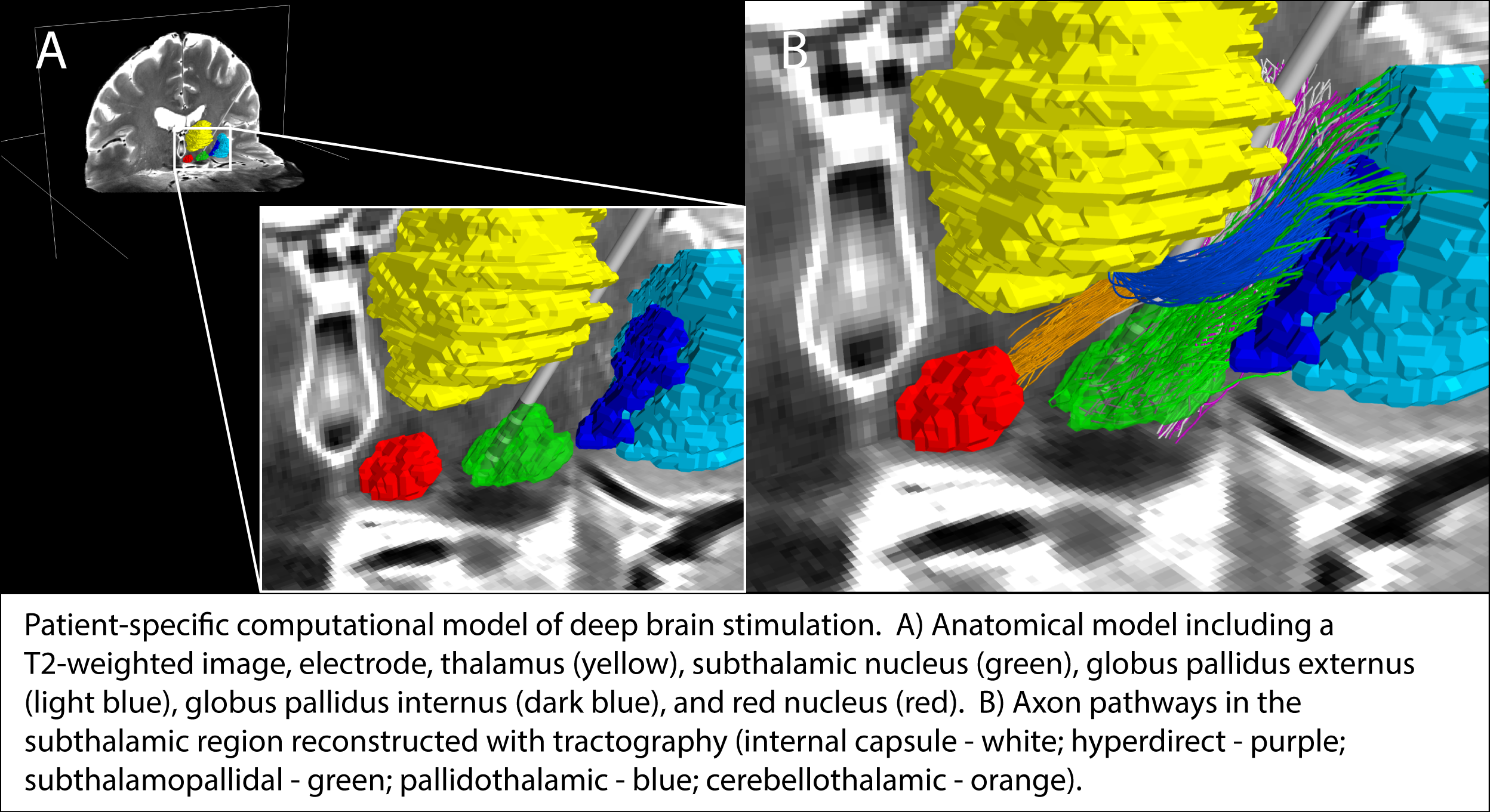Session Information
Date: Thursday, June 8, 2017
Session Title: Parkinson's Disease: Neuroimaging And Neurophysiology
Session Time: 1:15pm-2:45pm
Location: Exhibit Hall C
Objective: The goal of this work is to quantify the specific pathways directly activated by clinical DBS settings.
Background: Deep brain stimulation (DBS) of the subthalamic region is an established clinical therapy for the treatment of late stage Parkinson’s disease. A fundamental biophysical effect of DBS is the generation of action potentials in axons surrounding the stimulating electrode. The subthalamic region is made up of multiple axonal pathways, and it is unclear which of these pathways are directly responsible for the therapeutic benefit (or side effects) generated by DBS.
Methods: A patient-specific computational model of DBS was created based on 7T MRI data. Subcortical nuclei were segmented from T1-weighted, T2-weighted, and susceptibility-weighted images. Axonal pathways representing the hyperdirect, subthalamopallidal, pallidothalamic, and cerebellothalamic pathways, as well as the internal capsule were reconstructed by conducting tractography with diffusion-weighted images. Each of the 5000 axons reconstructed were modeled as a multi-compartment cable structure. The voltage distribution generated by the DBS electrode was calculated using a finite element method; this voltage distribution was then used to stimulate the model axons; and the response of the axons to DBS was quantified. [figure1]
Results: Recruitment curves were created for each electrode contact to calculate the effects of different amplitudes on the activation of each pathway. The clinically-defined therapeutic stimulation setting (contact 2, 2 Volts, 60 microseconds) activated the hyperdirect, subthalamopallidal, pallidothalamic, and cerebellothalamic pathways. The relative proportion of activated pathways could be most effectively biased by selecting different contacts.
Conclusions: Clinically effective stimulation most likely activates multiple pathways. Preferential stimulation of different pathways is possible but is dependent upon the patient-specific anatomy, electrode position, and stimulation parameter settings.
To cite this abstract in AMA style:
K. Gunalan, B. Howell, R. Patriat, Y. Duchin, G. Sapiro, N. Harel, C. McIntyre. Pathway Selective Deep Brain Stimulation Derived from Patient-Specific Models [abstract]. Mov Disord. 2017; 32 (suppl 2). https://www.mdsabstracts.org/abstract/pathway-selective-deep-brain-stimulation-derived-from-patient-specific-models/. Accessed December 19, 2025.« Back to 2017 International Congress
MDS Abstracts - https://www.mdsabstracts.org/abstract/pathway-selective-deep-brain-stimulation-derived-from-patient-specific-models/

